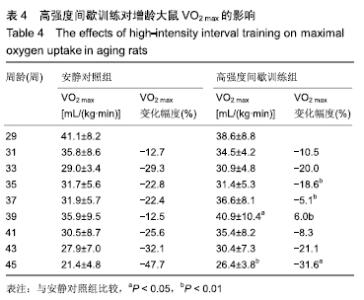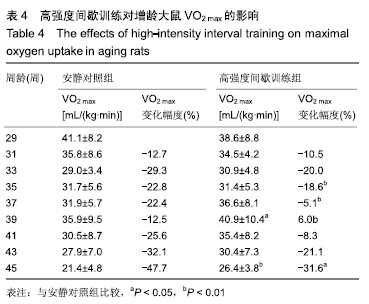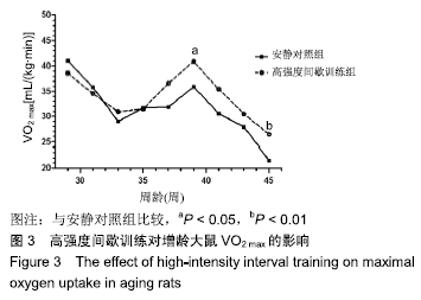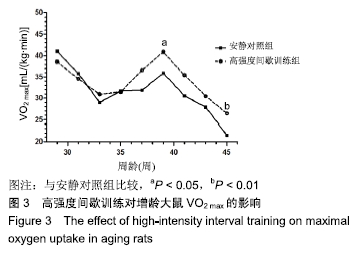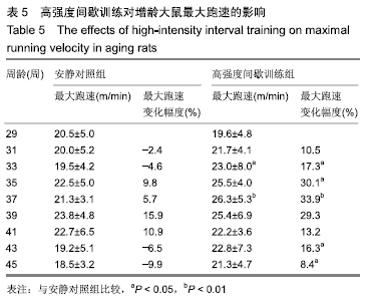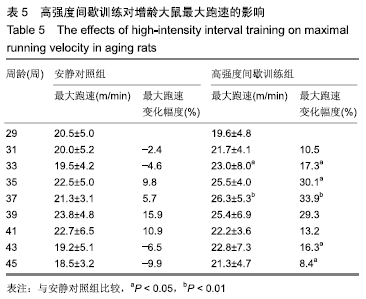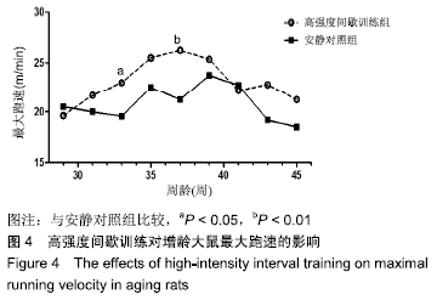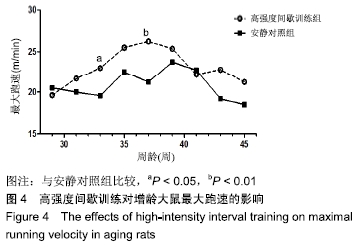[1] 谢敏豪,李红娟,王正珍,等.心肺耐力:体质健康的核心要素——以美国有氧中心纵向研究为例[J].北京体育大学学报,2011, 34(2):1-7.
[2] BEDFORD TG, TIPTON CM, WILSON NC, et al.Maximum oxygen consumption of rats and its changes with various experimental procedures.J Appl Physiol Respir Environ Exerc Physiol.1979;47(6):1278-1283.
[3] SUI X, LAMONTE MJ, LADITKA JN, et al. Cardiorespiratory fitness and adiposity as mortality predictors in older adults. Jama.2007;298(21): 2507-2516.
[4] JACKSON AS, SUI X, HEBERT JR, et al.Role of lifestyle and aging on the longitudinal change in cardiorespiratory fitness. Arch Intern Med.2009;169(19): 1781-1787.
[5] THOMPSON WR GN, PESCATELLO LS. ACSM’s Guidelines for Exercise Testing and Prescription. Philadelphia: Lippincott Williams and Wilkins.2010.
[6] HARBER MP, KONOPKA AR, UNDEM MK, et al.Aerobic exercise training induces skeletal muscle hypertrophy and age-dependent adaptations in myofiber function in young and older men.J Appl Physiol (1985). 2012;113(9):1495-1504.
[7] CHEN YC, HO CW, TSAI HH, et al.Interval and continuous exercise regimens suppress neutrophil-derived microparticle formation and neutrophil-promoted thrombin generation under hypoxic stress.Clin Sci (Lond).2015;128(7): 425-436.
[8] RAMOS JS, DALLECK LC, TJONNA AE, et al.The impact of high-intensity interval training versus moderate-intensity continuous training on vascular function: a systematic review and meta-analysis. Sports Med.2015;45(5): 679-692.
[9] COETSEE C, TERBLANCHE E.The effect of three different exercise training modalities on cognitive and physical function in a healthy older population.Eur Rev Aging Phys Act. 2017; 14:13.
[10] STOREN O, HELGERUD J, SAEBO M, et al. The Effect of Age on the VO2max Response to High-Intensity Interval Training. Med Sci Sports Exerc.2017;49(1): 78-85.
[11] 王蕴红.常用运动动物模型的建立方法[M].北京:北京体育大学出版社,2012.
[12] LEANDRO CG, LEVADA AC, HIRABARA SM, et al. A program of moderate physical training for Wistar rats based on maximal oxygen consumption.J Strength Cond Res.2007; 21(3):751-756.
[13] 彭莉.置疑最大摄氧量——测试方法与判定标准[J].体育科学, 2011,31(7): 85-91.
[14] KIM CH, WHEATLEY CM, BEHNIA M, et al.The Effect of Aging on Relationships between Lean Body Mass and VO2max in Rowers.PloS one.2016;11(8): e0160275.
[15] 孙华伟,廖肇福,赖炳林,等.跑台运动对高龄大鼠运动机能的改善作用[J].中国实验动物学报,2017,25(1): 48-53.
[16] Pica AJ, Brooks GA. Effects of training and age on VO2max in laboratory rats.Med Sci Sports Exerc.1982;14(3): 249-252.
[17] 曾昭淳,马厚勋.不同年龄大鼠组织NO含量和NOS活性的变化与衰老之间的关系[J].中国老年学杂志, 2000,20(5): 305-307.
[18] NORTH BJ, SINCLAIR DA.The intersection between aging and cardiovascular disease. Circ Res.2012;110(8): 1097-1108.
[19] SMILEY-OYEN AL, LOWRY KA, FRANCOIS SJ, et al. Exercise, fitness, and neurocognitive function in older adults: the “selective improvement” and “cardiovascular fitness” hypotheses. Ann Behav Med.2008;36(3): 280-291.
[20] HELGERUD J, HOYDAL K, WANG E, et al. Aerobic high-intensity intervals improve VO2max more than moderate training.Med Sci Sports Exerc.2007;39(4): 665-671.
[21] DE LORENZO A, VAN BAVEL D, DE MORAES R, et al. High-intensity interval training or continuous training, combined or not with fasting, in obese or overweight women with cardiometabolic risk factors: study protocol for a randomised clinical trial.BMJ Open.2018;8(4): e019304.
[22] ROY M, WILLIAMS SM, BROWN RC, et al.HIIT in the Real World: Outcomes from a 12-Month Intervention in Overweight Adults.Med Sci Sports Exerc. 2018;50(9):1818-1826.
[23] DELWING-DE LIMA D, ULBRICHT A, WERLANG-COELHO C, et al. Effects of two aerobic exercise training protocols on parameters of oxidative stress in the blood and liver of obese rats.J Physiol Sci. 2018;68(5):699-706.
[24] PREDOVAN D, FRASER SA, RENAUD M, et al. The effect of three months of aerobic training on stroop performance in older adults.J Aging Res. 2012;2012:269815.
[25] WISLOFF U, ELLINGSEN O, KEMI OJ. High-intensity interval training to maximize cardiac benefits of exercise training?. Exerc Sport Sci Rev.2009;37(3): 139-146.
[26] BASARAN S, GULER-UYSAL F, ERGEN N, et al.Effects of physical exercise on quality of life, exercise capacity and pulmonary function in children with asthma.J Rehabil Med. 2006;38(2): 130-135.
[27] JOYNER MJ, COYLE EF.Endurance exercise performance: the physiology of champions.J Physiol. 2008;586(1):35-44.
[28] HOYDAL MA, WISLOFF U, KEMI OJ, et al. Running speed and maximal oxygen uptake in rats and mice: practical implications for exercise training.Eur J Cardiovasc Prev Rehabil.2007;14(6): 753-760.
[29] BOUAZIZ W, LANG PO, SCHMITT E, et al.Health benefits of multicomponent training programmes in seniors: a systematic review.Int J Clin Pract. 2016;70(7):520-536.
|
